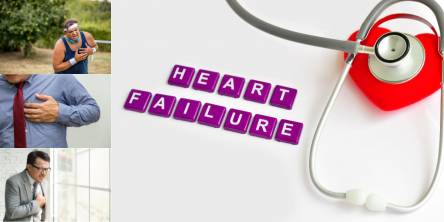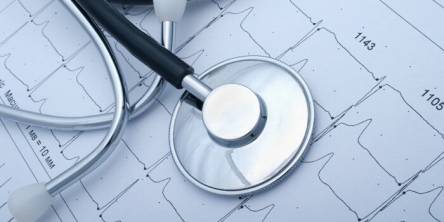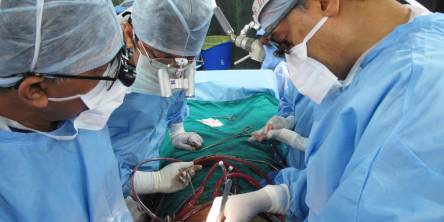Heart Diseases & Disorders

The majority of people experience “arrhythmias” (irregular heartbeats) at some point in their lives. Most of the time, these arrhythmias occur in healthy people (free of heart disease). However, some arrhythmias are dangerous and may also be a symptom of another heart disease.
Disease categories
1) Electrical – arrhythmias are caused by some troubles with electrical system that control the steady heart beat. Some arrhythmias are very dangerous and even cause sudden cardiac death.
2) Circulatory – blood vessel disorders are mainly due to coronary artery disease and high blood pressure. And this may results stroke or heart attack
3) Structural – cardiomyopathy (heart muscle disease) and congenital abnormalities ( inborn defect) are the main disease that can damage the heart muscle or valves.
Electrical disorder
If arrhythmias are in heart’s upper chamber, diseases occurring are
1) Atrial fibrillation –due to disorganized signals from electrical system of heart, the heart beats will irregular and rapid. Atrial fibrillation is not a life threatening, but it can become a reason for heart failure and stroke. In order reduce the chance for stroke, doctors prescribe anticoagulants (blood thinners) to patients with atrial fibrillations.
2) Atrial flutter – is due to a single electrical wave that rapidly circulates in the atrium. Atrial flutter results a steady and very fast heart beat.
3) Sick sinus syndrome – occurs when heart’s pacemaker (sinus atria) is not working properly. Sick sinus syndrome results bradycardia (slow heart rate) and tachycardia (high heart rate). Treatment invoves placement of artificial pacemaker.
4) Sinus tachycardia – due to sinus tachycardia heart rate may increase to normal level while having excitement, fever and doing exercise. Normally no treatment is required. Treatment is only required when sinus tachycardia is due to anemia or hyperthyroidism
If arrhythmias are in heart’s lower chamber, diseases occurring are
1) Ventricular tachycardia - Ventricular tachycardia is life threatening and in some cases it occurs with other heart disease. Ventricular tachycardia can lead to ventricular fibrillation. Ventricular fibrillation is a dangerously fast and disorganized heart beat. Treatment for ventricular tachycardia involves surgery, radiofrequency ablation and medications. Implantable defibrillators help to protect people with ventricular tachycardia.
2) Ventricular fibrillation - Ventricular fibrillation causes cardiac arrest, this may leads to cardiac deaths. Ventricular fibrillation causes the heart chambers (atria and ventricles) to spasm. In some cases heart attack can cause ventricular fibrillation. Ventricular fibrillation is very dangerous and fast can stop the working of heart. Treatment is necessary for ventricular fibrillation, is defribrillation.
Other arrhythmias are
1) Premature contraction – this arrhythmias occur in both upper and lower chambers are extra, early beats
2) Long QT beats – is an electrical system’s disorder caused by inheritance or by some medications or by a combination of both. People with “Long QT beats” are at higher risk for ventricular fibrillation
3) Heart block – heart block happen when there is an interruptions for the electrical signal to pass from atria to ventricles. Due to this heart beat will be slow and the amount of oxygen reaching the brain and body will decrease
4) Syncope – this is a serious heart rhythm disorder may be due to low blood pressure or may due to risk of injuries from falling.
Circulatory disorder
1) Heart attack – blockages in the arteries in arteries reduces oxygen to the heart muscle causing heart attack. Emergency treatment can reduce further damage to the heart muscle.
2) Stroke – stroke, also called a brain attack. This stroke is not a true heart disorder and is caused by the reduced blood flow to the brain. Atrial fibrillation and atrial flutter may create blood clots. When these blood clots reach the brain, it will create blocks in the vessel, which will result in a stroke.
Structural disorder
1) Heart failure – heart failure happens when heart muscle is too weak to pump blood.
2) Heart valve problems – these problems are due to either heredity or develop on their own. These problems affect the pumping ability of heart. Treatments are medications and surgery.
Similar Articles
Today every third human is facing heart disease, and it's not a good sign. A recent study says that out of 10, the reason for death for 8 people is heart failure.
A quarter of all deaths is caused by heart disease in the UK. This means that every three minutes, someone dies due to heart complications. These figures are worrying. But, luckily, there are things you can do every day to reduce your risk of developing heart disease.
Heart conditions such as heart disease, heart failure, arrhythmia etc. are much more common than people think. Every day millions of people are living with some form of a heart condition.
Premature heartbeats are a kind of heart rhythm disturbance, which may signal about some more serious heart malfunctions. Nevertheless, premature heartbeats can occur both in individuals who have developed coronary heart disease or cardiomyopathy and in those, with a healthy organ.
Did you know that choking, snoring, shortness of breath, daytime drowsiness and multiple episodes of nighttime waking are all indications that you may be suffering from obstructive sleep apnea? OSA has been linked as a precursor to multiple health conditions such as hypertension, heart disease, diabetes, and even Sudden Cardiac Death.
Congenital heart disease is a term used to define a group of different kinds of conditions that affect the heart. These problems will begin to affect the baby’s heart during while the baby is in the womb.
Before knowing how to survive a heart attack, you must first know what is happening to your body
There are mainly four types of valves present in our heart and they are mitral, tricuspid, aortic
Don’t treat your heart disease as your fate. Although there are some risk factors that we are not able to control, there are some risk factors that we can control.









